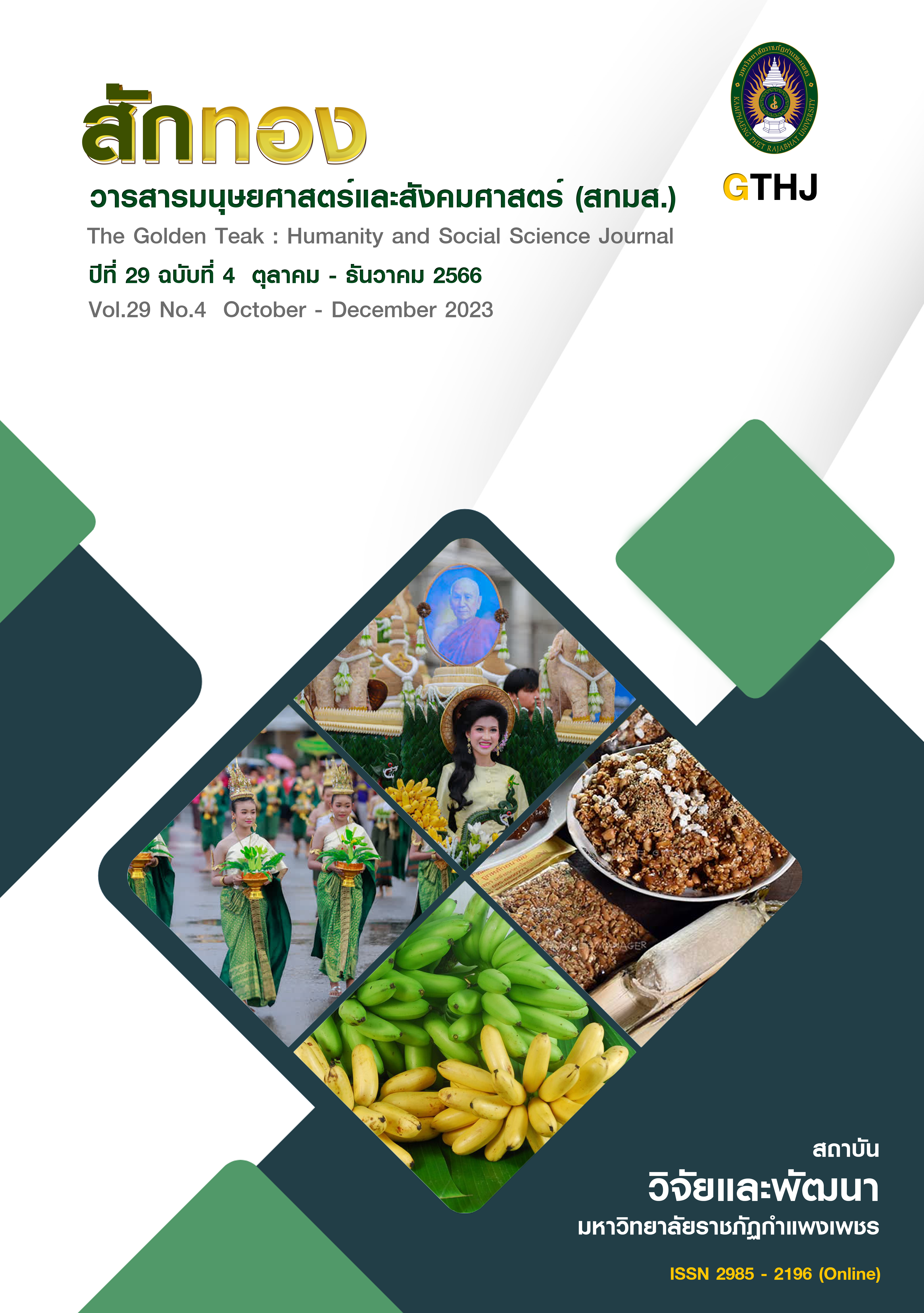Summary of Conceptual Maps of Educational Multiple Variables
Main Article Content
Abstract
The analysis of multiple variables is based on univariate and bivariate analysis, which researchers should understand about relationship systems, correlation of variance, the measure level of the variable and the level of statistical significance this will be the basis applied to the analysis of multiple variables in educational research was simple correlation. Multiple correlation simple regression and multiple regressions. Path Analysis Technique is a multivariate analysis technique that can be used to completely analyze the relationship between variables according to the researcher's idea by finding the relationship coefficient between variables. Both directly and indirectly the researcher will use analytical techniques according to the created set of equations. This set of equations created must be consistent with the relationship path diagrams between all variables. Factor analysis is the grouping of variables with the same characteristics together and creating a new variable called factor in which the factors obtained will represent a group of variables with properties. Close together this will reduce the number of variables to an appropriate level. The main idea of this Cluster Analysis technique is that the same things should be in the same group. But everything may not be exactly the same. The similarity was therefore the same by being related to each other. Discriminant Analysis is a statistical technique to answer the researcher's question as to which variables the group differences are caused by. Which variable is the variable that divides the population into groups or what characteristics does each group have? Multiple Classification Analysis is a statistical method for studying the internal correlation between multiple independent variables and one dependent variable based on linear positive correlation. Which is such that several independent variables do not affect each other. The MANOVA analysis aimed to determine the relationship between individual independent variables of one or more values at group level measurement with dependent variables and independent variables with dependent variables. ANCOVA is a statistic used to control the complication variable from affecting the research. This is to prevent discrepancies that may occur from random processes. or the experimental process or may occur in the treatment or in the studied variables which may result in the discrepancy of the research conclusion causing the research to reduce credibility Canonical analysis is the correlation between two variables that give the most correlation between the data. Where each set may contain multiple variables and number of variables in each set was optional or not.
Article Details

This work is licensed under a Creative Commons Attribution-NonCommercial-NoDerivatives 4.0 International License.
บทความที่ได้รับการตีพิมพ์เป็นลิขสิทธิ์ของวารสาร สักทอง : วารสารมนุษยศาสตร์และสังคมศาสตร์ สถาบันวิจัยและพัฒนา มหาวิทยาลับราชภัฏกำแพงเพชร
ข้อคิดเห็นใดๆ ที่ปรากฎในวารสารเป็นวรรณกรรมของผู้เขียนโดยเฉพาะ ซึ่งมหาวิทยาลัยราชภัฏกำแพงเพชรและบรรณาธิการไม่จำเป็นต้องเห็นด้วย
References
Butsaenkom, P. (2012). Selection of predictive variables into multiple regression equations. Journal of Educational Measurement, 17(1), 43-60. [In Thai]
Chris, F. & Adrian, E. R. (2002). Model-based clustering, Discriminant analysis, and density estimation. Journal of the American Statistical Association, 97(458), 611-631.
Hair, J.F., Anderson, R.E. & Tatham, R.L. (1987). Multivariate Data Analysis with Reading. New York : Macmillan Publishing Company.
Johnson, R.A. & Wichern, D.W. (2002). Applied Multivariate Statistical Analysis. (5 th ed.). Englewood Cliffs, New Jersey : Prentice Hall.
Joseph F., Hair, R.E., Anderson, R.L., Tatham & William, C.B. (1999). Multivariate data analysis. (5 th ed.). New Jersey : Prentice-Hall International, Inc.
Meejang, S. (2001). Advanced statistics for research. Bangkok : Nisin Adventure Grove. [In Thai]
Meejang, S. (2003). Advanced Statistics for Research. (2 nd ed.). Bangkok : NISIN ADVERTISING Groove. [In Thai]
Mushtak, A.K. (2012). Multivariate Statistical Analysis. British Journal of Science 6(1), 55-66.
Noemí, M., Pedro, J.M., Rafael, G. & Diego, G. (2015). Multivariate analysis in thoracic research. J Thorac Dis, 7(3), E2-E6.
Prommaphan, B. (2021). Interpretation Techniques of Data Analysis for Using Correlation and Regression in Research. Journal of Education Stou, 11(1), 32-45. [In Thai]
Thumthong, B. (2016). Research Methods in Curriculum and Instruction. (2 nd ed.).
Bangkok : Triple Group Co., Ltd. [In Thai]
Thumthong, B. (2016). Multivariate Analysis for Education. Surin : Faculty of Education, Surin Rajabhat University. [In Thai]


